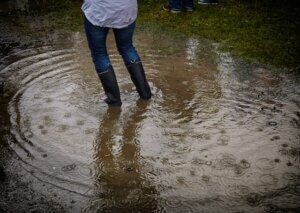Essential Tools for DIY Water Removal Projects
Essential Tools for DIY Water Removal Projects
Key Takeaways
- Submersible pumps are vital for efficiently removing large volumes of water, particularly in areas like basements.
- Wet/dry vacuums are essential for dealing with smaller water volumes and reaching water in difficult spots.
- Combining air movers and dehumidifiers accelerates the drying process, crucial for preventing mould growth.
- Moisture meters play a key role in identifying hidden dampness within walls, floors, and ceilings to ensure complete drying.
- Safety gear, including waterproof gloves, boots, and goggles, is critical for personal protection during DIY water removal tasks.
Summary
This article details essential tools for DIY water removal, highlighting the importance of submersible pumps, wet/dry vacuums, air movers, dehumidifiers, moisture meters, and personal protective equipment. It underscores the necessity of rapid action and proper equipment to mitigate water damage effectively, ensuring safety and preventing mould growth. The guide serves as a comprehensive toolkit for homeowners tackling water removal tasks independently.
In the aftermath of a flood or significant water leakage, swift and effective water removal is paramount to preventing lasting damage to your home or property. While professional water removal services are invaluable, many homeowners opt for a do-it-yourself approach for immediate action or when the situation is manageable. This comprehensive guide outlines the essential tools every homeowner should have on hand for DIY water removal projects, ensuring a quick response that can mitigate the impact of water damage.
High-Capacity Pumps
A submersible pump is crucial for removing large volumes of water efficiently from your property. Ideal for basements or any area that’s been heavily flooded, these pumps can be placed directly in the water, allowing for the extraction of water at a rapid pace. Opt for a pump with a high capacity, capable of moving at least 2,000 gallons of water per hour for best results.
Wet/Dry Vacuum
For smaller volumes of water or to tackle water in hard-to-reach places, a wet/dry vacuum is indispensable. Unlike regular vacuums, these are specifically designed to handle moisture, slurping up water from floors, carpets, and even upholstery. Choose a model with a large tank capacity and strong suction power to make your cleanup efforts more efficient.
Air Movers and Dehumidifiers
After removing the bulk of the water, the next step is to dry out the affected area thoroughly. Air movers are powerful fans that significantly increase air circulation, speeding up the drying process. Pairing air movers with a dehumidifier pulls moisture from the air, preventing mould and mildew growth. This combination is essential for restoring the environment to its pre-flood condition.
Moisture Meters
To ensure your property is thoroughly dried, a moisture meter can detect hidden dampness in walls, floors, and ceilings that could lead to mould problems down the line. These tools provide a quantitative measure of moisture content, helping you identify areas that need further drying or attention.
Personal Protective Equipment (PPE)
Safety should never be overlooked in DIY water removal projects. Personal Protective Equipment (PPE), including waterproof gloves, boots, and goggles, protects against contaminants in the water. Additionally, wearing a respirator or mask can prevent the inhalation of harmful moulds and bacteria that water can introduce into your home.
Cleaning Supplies
After water removal, cleaning and disinfecting the area is critical to prevent the spread of bacteria and mould. Stock up on antimicrobial cleaners and mould inhibitors to thoroughly clean all surfaces that come in contact with water. For natural alternatives, consider using vinegar or hydrogen peroxide, known for their disinfecting properties.
Utility Knife and Construction Bags
Water damage often requires the removal of damaged materials like carpet, drywall, and insulation. A utility knife is essential for cutting these materials out, while heavy-duty construction bags will hold the debris for disposal. Be prepared to carefully cut away and bag up any water-damaged materials to prevent mould from taking hold.
Equipping yourself with these essential tools for DIY water removal projects can significantly impact your ability to manage water damage effectively. Remember, the key to successful water damage restoration lies in quick action and the right equipment. While this guide provides a solid foundation, always assess the situation carefully and consider professional help for severe cases to ensure your home’s safety and integrity.
FAQs
What is the first step in water removal?
The first step in water removal is to ensure safety by turning off electricity and gas in the affected area. Next, identify the source of water and stop it if possible. Then, remove standing water using pumps or wet/dry vacuums.
How long does it take to dry out a house after water damage?
The drying time can vary significantly depending on the extent of the water damage, the methods used for water removal, and the drying conditions. Generally, it can take anywhere from 24 hours to several weeks. Using dehumidifiers and air movers can speed up the process.
Can water removal prevent mould growth?
Yes, prompt and thorough water removal, followed by drying and dehumidifying the affected areas, can significantly reduce the risk of mould growth. However, it’s crucial to start the process within 24 to 48 hours after the water damage occurs to prevent mould spores from taking hold.
Why Choose AllAces?
AllAces Cleaning & Restoration has over 35 years of industry experience handling extensive water removal and restoration services across Brisbane, Sydney, Melbourne, and surrounds. Our IICRC-certified technicians utilise the technology and equipment to ensure the return of a pre-loss condition.


